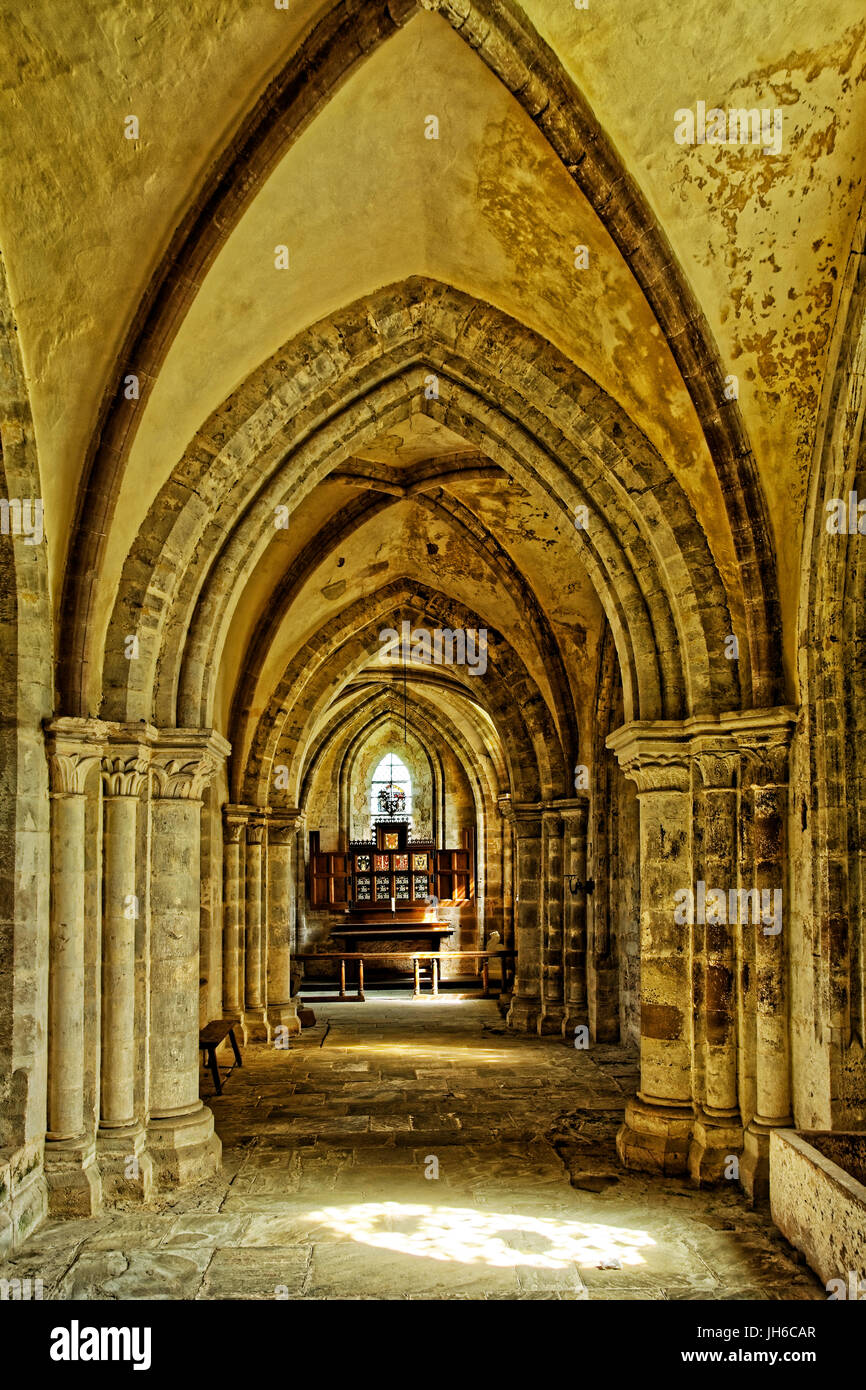Dore Abbey at Abbey Dore, Herefordshire is in the Golden Valley and is a former Cistercian abbey. Part is medieval, a parish church since the 16th cen

Image details
Contributor:
Philip Chapman / Alamy Stock PhotoImage ID:
JH6CARFile size:
68.7 MB (4.9 MB Compressed download)Releases:
Model - no | Property - noDo I need a release?Dimensions:
4000 x 6000 px | 33.9 x 50.8 cm | 13.3 x 20 inches | 300dpiDate taken:
16 June 2017Location:
Abbey Dore, United KingdomMore information:
Dore Abbey at Abbey Dore, Herefordshire is in the Golden Valley and is a former Cistercian abbey. Part is medieval, a parish church since the 16th century with remaining parts now ruined. The abbey was founded in 1147 by Lord Robert FitzHarold of Ewyas Harold, located close to the River Dore. It was a daughter house of the Cistercian abbey at Morimond, perhaps after Lord Robert had met the Abbot of Morimond on the Second Crusade. Construction in local sandstone began around 1175, and continued through the time of the first three abbots, Adam (1186-c.1216), Adam II (c.1216–1236), and Stephen of Worcester (1236–1257). The design of the church has a presbytery, two chapels, two transepts, a crossing and a nave . During the early 13th century, the abbey expanded, granted to them by King John in 1216. This enabled the abbey to become wealthy, especially through the sale of wool, and as a result the abbey was largely rebuilt in the Early English style. The presbytery was expanded, and additional chapels, a processional ambulatory, and domestic buildings including a chapter house were added. The new building was consecrated by Thomas de Cantilupe, Bishop of Hereford, in 1282, and was dedicated to the Holy Trinity and Saint Mary. Large parts of the 12th and 13th century buildings, including the north and south transepts and the interior columns, together with some tiles, wooden fittings and fragments of stained glass, remain in place today. The building also houses two 13th century effigies, thought to be those of a later Lord Robert of Ewyas and his half-brother Roger de Clifford (d.1286), and carved stone roof bosses. After it was dissolved in 1536, it was bought by a local landowner, John Scudamore, a member of a gentry family historically connected with Owain Glyndŵr, later restored in the 1630s by his great-great-grandson John Scudamore, 1st Viscount Scudamore. The original nave was blocked off and a new tower erected, and a new carved oak rood screen, incorporating